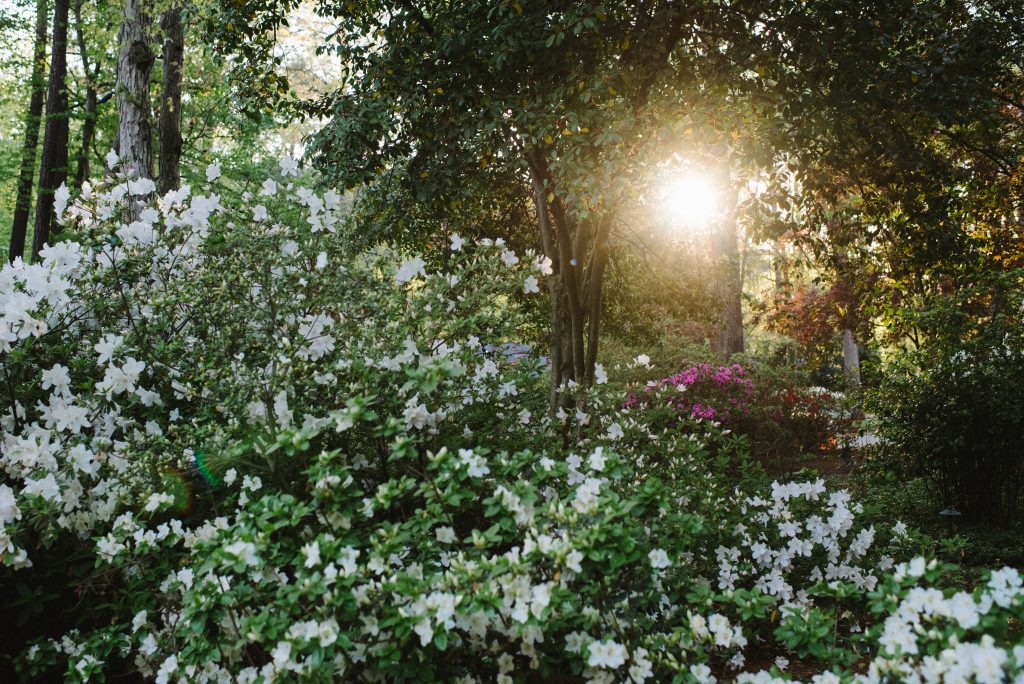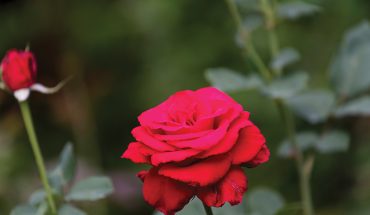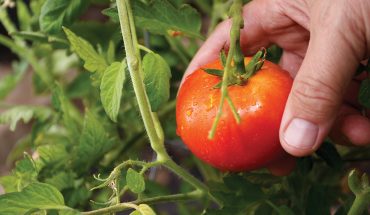Prep for a Raleigh summer, enjoy spring blooms, prune and enjoy this transitional yet peaceful month in the garden
By Hannah Ross
The incomparable poet Mary Oliver once wrote, “attention is the beginning of devotion.” I think of this phrase often in Spring, when each day whispers of wonders to come. As winter begins its retreat and spring simmers around the edges, the subtle revolution of March offers us something new each day. While it’s easy to spot the highlighter-yellow daffodils at the park, we may have to kneel in the mud to notice the striking spots on a nodding hellebore, or find a tiny asparagus spear emerging from the earth. In the case of the woodland ephemerals like bloodroot and dog’s foot violet, we may have to trek through the woods— eyes open wide— to witness their brief breath of earthside beauty.
March is full of magic and opportunity for those on the lookout. Early spring asks us to unfurl alongside it, looking closely for signs both large and small. When we pay attention to this earth, there is no chance of not loving it. Adopt these five tips for noticing and nurturing your own March landscape.
Plant Cool Weather Lovers
One March morning at the grocery store several years ago, a cashier asked about my dirty overalls. I said I was off to finish some planting in my garden. He looked at me aghast and said, “you better not plant now— everything’s gonna die!” I spared the next person in line the spiel I could’ve shared on the abundant possibilities of early spring planting; this venue feels more appropriate for that lesson. Many of us have been taught that gardening begins in April (unless we’re talking about pansies). However, there is bountiful life to experience outdoors in early spring, cool nights help plants that need lower temperatures prepare strong roots for hotter days.
This month, many plants can be direct seeded, including: lettuce, kale, collards, chard, dill, cilantro, baby turnips, bok choy, mustard greens, spinach, beets, carrots, California poppies, chocolate lace flower, and calendula. Peas are commonly started now, too— make a note for next year that starting in early February will help yield an even better crop. Whenever you plant peas, enjoy harvesting the tender greens— they’re just as worthwhile as the peas themselves.
Additionally, many cold-hardy annual, biennial, and perennial flowers thrive in March and can be transplanted now. Check your local nursery for rudbeckia, coreopsis, foxglove, dianthus, snapdragons, alyssum, hollyhocks, and daisies (among others). If you’re unsure of the cold-tolerance of a plant, look up its hardiness zone; if it is cold hardy to zones north of ours (we are zone 7; the northern zones are lower numbers), then it’s safe to plant even in the face of coming frosts.
Prep for Summer Planting
While we spring at the opportunity for cool weather planting, warm days are just around the corner. Once the last frost date hits in April, it often feels like a mad dash to get everything purchased and planted, zipping back and forth between garden centers and hardware stores. Avoid that frenzied feeling by preparing now for summer plantings.
Now is the time to start tender annuals like summer vegetables, herbs and flowers indoors. Check the back of your summer seed packets; those that suggest starting indoors 4-6 weeks before your last frost are ideal for March sowing. Seedlings need heat, light, and moisture to germinate; using a heat mat, a sunny window or grow lights, and a tray covered by a humidity dome will help your seeds spring to life. Easy-growing seeds to start inside now include: tomatoes, peppers, eggplant, basil, zinnias, shiso, marigolds, celosia, cosmos, amaranth, and nasturtium. Cucurbits are fast-growing, so those can wait until the last of March or first of April (or simply be sown in the garden after the last frost).
To get ready for everything from cucumbers to zinnias, clear your garden beds of weeds, and amend the soil with a layer of compost or leaf mold, along with organic nutritional amendments if necessary. A pronged tool like a broadfork or pitchfork is helpful for loosening the soil and gently sifting in amendments without overturning the earth entirely. This is a minimal tillage approach, which helps protect thriving microbial life underneath the surface of the soil (it’s fine to loosen the top layer of soil, but avoid inverting it). Adding amendments like compost at least a few weeks before planting (or even in the fall) allows the potent injection of nutrition to settle into the soil a bit, making it easier on the tender roots of young transplants.
Once the soil is ready to receive plants, make sure your infrastructure and equipment is good to go. Do you have all the necessary pieces to your irrigation system? Are there enough t-posts to build your tomato trellis? Did you find that missing pair of pruners? Get everything up and running before you are in dire need of it (a lesson I learn over and over again).
Prune for Renewal
In this moment where winter meets spring, we can help bring forth renewal by pruning dead growth and clearing the way for perennials to awaken from dormancy. It is a healthy and helpful gardening practice to leave some tall stems, spent leaves, and seed pods intact in the fall, as a source of food and habitat for wildlife over winter. Now that new growth is awakening at every turn, it is the ideal time to clear out brittle detritus and make way for the sun to greet the soil.
Many perennials, like coneflower, may still look dormant from a distance, but when you lower your eyes to the earth, the awakening of new leaves signals the immediacy of spring tasks at hand. Check perennials, shrubs, and trees for dead growth, and prune it back to the ground or to a node. This helps new growth to receive optimum sunlight and resources, and to perform the alchemy of creation. While you should avoid pruning back stems that are on the verge of flowering, prune back dead or ragged branches to promote ample flowering and ideal form.
Protect Tender Growth
I may speak romantically of early spring, but it can still be a trickster. Don’t get fooled by 80 degree days into putting your tomatoes out early. Remember that even cold-hardy plants like lettuces can suffer cold damage from freezing nights. If you are raising tender annuals at home, keep them indoors overnight if temperatures drop below 50 degrees to avoid damage. And if you have tiny cold-hardy seedlings in the ground, protect their tender growth with a frost cloth (even a bedsheet) on freezing nights. The month of March brings a bit of whiplash; we are often rushing plants out into the warm sunshine during the day, only to hurry them back indoors as evening temperatures plummet. Ride out the rollercoaster and you’ll have a host of happy plants come mid-April (our last frost date).
Pick and Enjoy Spring’s Beauty
If you planted bulbs in the fall, you’ve been waiting patiently for signs of life, and your diligent labor is now being rewarded (and if you didn’t plant fall bulbs or don’t know how, glean inspiration from last November’s column). Spring bulbs like daffodils, tulips, hyacinth, snowdrops, muscari, and anemones (technically a corm, not a bulb) are now gracing gardens across the Piedmont. To enjoy these bulbs at home, use a pair of clean snips to cut stems down to the base of the plant. Daffodils should be kept in a separate vase of water apart from other flowers for a few hours; this way, the toxic sap can drain from the stems. After this little detox, daffodils may be happily arranged with other spring bloomers.
In addition to bulbs, flowering branches like forsythia, tulip magnolia, redbud, plum, quince, and cherry are budding and opening all around us. When you see blooms in bud stage— their color evident but petals not yet open— it’s the perfect time to harvest branches. Use a sharp, clean pair of pruners to cut branches back to a node. To encourage woody stems to drink, use your pruners or a sharp knife to make a vertical or x-shaped cut in the bottom of the stem, opening up more surface area of vascular tissue to absorb water. Flowering branches make a stunning statement arranged alone in a simple, tall vase to grace an entryway, mantel, or dining room table.




